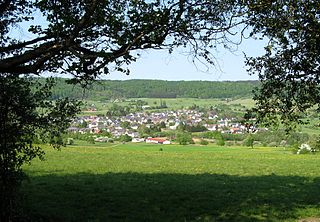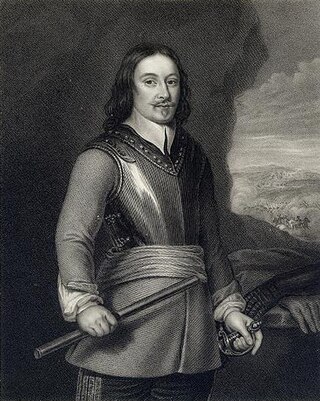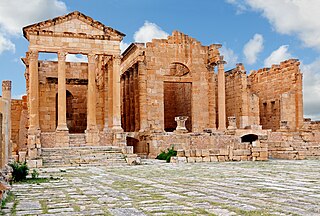
The Westerwald is a low mountain range on the right bank of the river Rhine in the German federal states of Rhineland-Palatinate, Hesse and North Rhine-Westphalia. It is a part of the Rhenish Massif. Its highest elevation, at 657 m above sea level, is the Fuchskaute in the High Westerwald.

Samuel Prout was a British watercolourist, and one of the masters of watercolour architectural painting. Prout secured the position of Painter in Water-Colours in Ordinary to King George IV in 1829 and afterwards to Queen Victoria. John Ruskin, whose work often emulated Prout's, wrote in 1844, "Sometimes I tire of Turner, but never of Prout". Prout is often compared to his contemporaries: Turner, Constable and Ruskin, whom he taught. He was the uncle of the artist John Skinner Prout.

Letitia Elizabeth Landon was an English poet and novelist, better known by her initials L.E.L.

The Lahn is a 245.6-kilometre-long (152.6 mi), right tributary of the Rhine in Germany. Its course passes through the federal states of North Rhine-Westphalia (23.0 km), Hesse (165.6 km), and Rhineland-Palatinate (57.0 km).

Marguerite Gardiner, Countess of Blessington, was an Irish novelist, journalist, and literary hostess. She became acquainted with Lord Byron in Genoa and wrote a book about her conversations with him.

Furness Abbey, or St. Mary of Furness, is a former monastery located to the north of Barrow-in-Furness, Cumbria, England. The abbey dates back to 1123 and was once the second-wealthiest and most powerful Cistercian monastery in the country, behind Fountains Abbey, prior to its dissolution during the English Reformation. The abbey contains a number of individual Grade I Listed Buildings and is a Scheduled Monument.
Oberlahnstein is a part of the city of Lahnstein in Rhineland-Palatinate in Germany. It lies on the right bank of the Rhine, at the confluence of the Lahn 4 m. above Koblenz, on the Right Rhine railway from Cologne to Frankfurt-on-Main.

Lahnstein is a verband-free town of Rhein-Lahn-Kreis in Rhineland-Palatinate, Germany. It is situated at the confluence of the Lahn with the Rhine, approximately 6 kilometres (3.7 mi) south of Koblenz. Lahnstein was created in 1969 by the merger of the previously independent towns of Oberlahnstein on the south side of the Lahn and Niederlahnstein on the north side. In 2020, it had a population of 18,030.

Nassau is a town located in the German state of Rhineland-Palatinate. It lies on the lower course of the Lahn River, on the mouth of the Mühlbach, between Limburg an der Lahn and the spa town of Bad Ems, and is located in the Nassau Nature Park, surrounded by the Westerwald to the north and the Taunus to the south. The town is on the German-Dutch holiday road, the Orange Route. As of 2021, it had a population of 4,592.
Henry II "the Rich" of Nassau was Count of Nassau. He distinguished himself in particular by his chivalrous and devout spirit. He was charitable and made great donations to the church, so that the monasteries and prayer houses in the area of present-day Nassau experienced the most significant bloom in his time. The greatest favour was the Teutonic Order to enjoy, to which he donated especially for the renunciation of his brother's, upon his entry into the order. Henry participated in the Sixth Crusade. He was the builder of the castles Sonnenberg, Ginsburg and Dillenburg.

Eltville am Rhein is a town in the Rheingau-Taunus-Kreis in the Regierungsbezirk of Darmstadt in Hesse, Germany. It lies on the German Timber-Frame Road.

Louis de Bourbon was Prince-Bishop of Liège from 1456 until his death.

Peter of Aspelt was Archbishop of Mainz from 1306 to 1320, and an influential political figure of the period. He brought the archbishopric to its peak of power.

Sir Thomas Tyldesley was a supporter of Charles I and a Royalist commander during the English Civil War.

William Tombleson was an English topographical and architecture artist, illustrator, copper and steel engraver, writer and printmaker, based in London.
James Baylis Allen (1803–1876) was a British engraver. Allen, together with Edward and William Radclyffe and the Willmores, belonged to a school of landscape-engravers which arose in Birmingham, where there were numerous engravers working on iron and steel manufactures.

Mamure Castle is a medieval castle in the Bozdoğan village, Anamur ilçe (district) of Mersin Province, Turkey.

Niederlahnstein station is, along with Oberlahnstein and Friedrichssegen, one of three stations in the town of Lahnstein in the German state of Rhineland-Palatinate. It is a separation station on the East Rhine Railway and the Lahn Valley Railway and is located in the Niederlahnstein district and forms a public transport hub for the Rhine-Mosel-Lahn area.

The archaeological site of Sbeitla is an archaeological site in Sbeitla, in north-central Tunisia. It represents the Roman ruins of Sufetula, and contains the best preserved Roman forum temples in Tunisia. It was excavated and restored between 1906 and 1921.
Thomas Higham was an English artist specialising in an antiquary and topographical engravings. The British Museum has a large collection of his work donated by his nephew William Aldis Wright.


















